How the Anti- Discrimination and Equality Bill affects the LGBT Community and Those Perceived to Belong to the LGBT Community
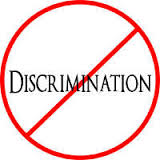
Introduction
 The Anti-Discrimination and Equality Bill, 2016 (“ADE”) was introduced in the Lok Sabha on the 10th of March, 2017, by Dr. Shashi Tharoor as a private member Bill. Dr. Tarunabh Khaitan, Associate Professor of Law at the University of Oxford has advised with respect to the contents of the Bill. According to an interview by Dr. Tharoor, 4% of private member Bills move on to the discussion stage. As of now, we do not know whether the ADE will move to the discussion stage. The protections provided under this Bill will apply to many different kinds of social markers. However, in this short article, I will try to lay out broadly how the ADE would affect the LGBT (lesbian, gay, bisexual and transgender) community and those perceived to belong to this community. For the remainder of the article, any mention of the LGBT community should be read as including both these categories, as is also the intention of the Bill.
The Anti-Discrimination and Equality Bill, 2016 (“ADE”) was introduced in the Lok Sabha on the 10th of March, 2017, by Dr. Shashi Tharoor as a private member Bill. Dr. Tarunabh Khaitan, Associate Professor of Law at the University of Oxford has advised with respect to the contents of the Bill. According to an interview by Dr. Tharoor, 4% of private member Bills move on to the discussion stage. As of now, we do not know whether the ADE will move to the discussion stage. The protections provided under this Bill will apply to many different kinds of social markers. However, in this short article, I will try to lay out broadly how the ADE would affect the LGBT (lesbian, gay, bisexual and transgender) community and those perceived to belong to this community. For the remainder of the article, any mention of the LGBT community should be read as including both these categories, as is also the intention of the Bill.
1. Protection from Sexual Orientation and Gender Identity Discrimination
The ADE is a comprehensive anti-discrimination Bill that seeks to provide all citizens of India protection from various forms of social discrimination (Preamble) from both the government and a set of private bodies (employers, landlords, shopkeepers, public contractors etc.). Therefore, several social markers such as caste, race, ethnicity, descent, pregnancy status, skin tone, food preference, HIV status, disability, marital status etc. which also form the bases of different kinds of discrimination in society are categorized as protected characteristics under this Bill. A protected characteristic is a characteristic on the basis of which one cannot be discriminated against. Sexual orientation and gender identity are also categorized as protected characteristics. Therefore, the most important feature of this Bill in the context of this article is that it provides protection from sexual orientation and gender identity related discrimination to citizens of India (S. 3(i) read with S. 14). Doubtless, it would include not only L, G, B and T persons but also persons who are gender fluid or gender queer, or do not identify with any particular identity category. However, by abundant caution, this Bill has stated that features which are, “either outside a person’s effective control, or constitute[s] a fundamental choice” are protected characteristics which cannot form the basis of discrimination.
2. Direct, Indirect and Aggravated Discrimination
A. Direct Discrimination
The Bill provides protection from direct, indirect and aggravated discrimination. Direct discrimination would arise when there is a rule or practice which is motivated by prejudice/stereotype or intends to harm people on the basis of their membership to a particular group (S. 6). For example, if a blood donation centre forbids gay men from donating blood because they assume that every gay man has AIDS, it would amount to direct discrimination on the basis of sexual orientation. This would be a case of direct discrimination even if the blood donation centre can produce statistical evidence to show that a large percentage of persons with HIV/AIDS are gay men, or that a large percentage of gay men have HIV/AIDS.
B. Indirect Discrimination
Indirect discrimination would arise when sexual orientation or gender identity do not form the direct basis of discrimination on the face of it (S.7). However, if one digs deeper, one will find that the LGBT community suffers a disproportionate disadvantage under the rule. S. 377 of the Indian Penal Code, 1860 (“IPC”) is the classic example. On the face of the law, it does not discriminate on the basis of sexual orientation or gender identity. As per S. 377, “carnal intercourse against the order of nature” is criminalized. However, S. 377 is seldom used against the sexual acts of a man and a woman. It is used primarily to harass members of the LGBT community (Naz petition, paragraph 5). Therefore, such a law although equal in words, treats people unequally based on their real or perceived sexual orientation or gender identity and disproportionately affect members of the LGBT community (Naz Decision, Delhi High Court, paragraph 113). Therefore, such a law would qualify as indirectly discriminatory under the Bill.
Another example may be surrogacy laws which restrict surrogacy to married couples. Apart from being directly discriminatory on marital status, such a law could also be indirectly discriminatory against the LGBT community if it is shown that surrogacy is one of the chief ways by which members of the LGBT community (esp. gay men) become parents.
C. Harassment, Boycott and Segregation
This Bill also protects the LGBT community against harassment, boycott and segregation. Therefore, any communication which has the purpose of creating a bullying atmosphere for actual or perceived membership of the LGBT community would be unlawful under this section (S. 8). The example present in the Bill itself is that if a boy is called a “sissy” for refusing to play sports, such name calling would amount to harassment.
Any call to boycott or ostracize someone on the basis of their actual or perceived sexual orientation or gender identity would be forbidden under the boycott provision of the Bill. For example, if the school principal in the example above-mentioned directs all students to stop interacting with the boy, the principal would have committed the act of boycott under this provision (S. 9).
Segregation is said to occur under the Bill when, by use or threat of force or manipulation, a person is prevented from interacting, marrying, eating, living, socializing, visiting, being friends with, etc. with a LGBT person (S.10). For example, if a landlord informs a tenant that their gay friends cannot visit them and if they do, the tenant would be kicked out of the rented property, such threat would amount to segregation under the Bill.
Further false complaints of kidnapping under S. 366 of the IPC also amount to segregation under the Bill (S. 10(2)). Therefore, if the parents of one of the partners of a lesbian couple file a false case of kidnapping against the partner of their daughter, it would amount to segregation under the Bill (in addition to the offence of false information under section 182 of the IPC). Furthermore, this Bill provides that in such situations, if the partner, whose parents have filed the case, makes a reliable statement stating that the complaint is false, such statement would be sufficient to prove that the complaint is false even if she later retracts from that (S.10 (3)).
Whether such a reliable statement should be sufficient to prove a false complaint case, or whether it should just establish a prima facie false complaint case and shift the burden on the other party (the complaining parents in this case), is something that the Parliamentarians may take time to consider in the discussion phase, in keeping with the realities of how these complaints are made in the police station and principles related to the apportionment of burden of proof in similar cases.
Finally, any encouragement or facilitation of violence against members of the LGBT community would constitute discriminatory violence under the Bill and any public servant whose duty it was to protect from such violence and fails to do so would also be said to have committed discriminatory violence (S.11).
3. Diversification Allowed
This Bill allows the adoption of any rule or policy that will encourage the participation of the LGBT community in government, local authorities or activities of private persons performing public functions (for example, public contractors). Such diversification measures can include scholarships, special training programmes etc. Such diversification techniques would not be to the detriment of affirmative action measures that may already exist (S. 13 read with S. 14 (6)). Additionally, public authorities while making a rule will be required to give due regard to ending discrimination and the promotion of quality and diversity (S. 16).
4. On Whom Does the Duty of Non- Discrimination Lie?
The duty of non- discrimination flows from persons belonging, or representing persons in, category A to, persons in category B. Persons in category A are 1. Employers, 2. Landlords, 3. Traders, 4. Service providers, 5. Public authorities; 6. Private persons performing public functions. Persons in B are 1. Employees; 2. Purchasers or tenants, 3. Consumers; 4. Consumers; 5. Any affected persons; 6. Any affected person, respectively (S.14). A, or representatives of A cannot discriminate, directly or indirectly, or use discriminatory violence or boycott, harass or segregate, B.
Therefore, a landlord cannot refuse to rent property to transgender persons on grounds that they are transgender. Similarly, for other categories of A and B. Additionally, the landlord must also ensure that their employees like the house help etc. do not discriminate against the transgender tenant (S. 14(3)).
Inversely, the duty to not discriminate, harass, boycott etc. does not flow from B to A. Therefore, for example, an LGBT support group can put out a call on their Facebook page to boycott a particular food joint that has homophobic graffiti inscribed on its walls.
The duty of non- discrimination does not lie in personal relationships. For example, LGBT persons are not protected from discriminatory attitudes from their family members at home or discriminatory remarks from their friends or other personal relationships.
5. How Can these Protections Be Enforced?
A. Remedies Available
The protections provided under this Bill can be enforced by approaching the State Equality commission, a body proposed to be set up under this Bill (S. 31). The range of remedies available under the Bill are, apology, abandonment of discriminatory practice, diversity training, damages, normal and exemplary (this can go up to Rs. fifteen lakh), protection orders (which are like restraining orders) etc. (S. 33 and 34). Breach of a protection order can invite an imprisonment term of up to one year (S. 35(1)).
B. Who Can Bring the Claim?
As per S. 37, the claim can be brought by 1. the aggrieved person; 2. relative; 3. sexual or romantic partner; 4. organizations that represent the aggrieved person; or 5. with the permission of the central equality commission, any one aggrieved person acting on behalf of other aggrieved persons who have the same interest (for example, an LGBT activist challenging a particular law on behalf of all members of the LGBT community).
C. What Does the Aggrieved Person Have to Prove?
The aggrieved person (plaintiff) has to make out a prima facie case of discrimination. This means that the plaintiff will have to show that a particular rule or practice does in fact, mete out different treatment on the basis of sexual orientation or gender identity. Once the plaintiff shows this, the burden shifts to the respondent (employer, trader, government etc.) to show that such a discriminatory measure was instituted in good faith and as a proportionate means to achieve a legitimate end (S. 6(2) and 7(2)). However, there is no defence provided for segregation or boycott in the Bill.
D. Will S. 377 Pose some Practical Problems to this Bill?
The presence of S. 377 may pose some practical problems to the enforcement of the guarantees under the Bill. For example, a landlord may refuse to rent out property to a gay couple not because they are gay, but because their sexual act means that they would be engaging in criminal activity under the IPC. A landlord may refuse to rent out property to persons engaging in criminal activities. However, S. 36 of this Bill allows the High Court to strike down other laws incompatible with the provisions of the Bill. This could provide an opportunity for High Courts to consider whether S. 377 should remain on the books and provide another avenue for challenging this section.
6. Concerns
While there are several protections provided to the members of the LGBT community, there are some concerns that the Bill poses to the LGBT community. I will try to lay them out here.
A. Segregation, Boycott, Harassment Flows Both Ways
Recall that the duty to not discriminate, boycott, harass etc. flows from A to B (see part 4). As the Bill is written, A comprises people who provide services and B comprises people who receive services. Imagine a situation of a shop which is owned by a lesbian couple. While this couple may not discriminate against potential customers, customers may discriminate against this shop. They may not like to purchase goods from this shop. No one may enter this shop. The Bill does not provide a remedy in this situation.
A previous version of this Bill, The Equality Bill, 2016 accounted for such a situation. S. 14(2) of this version forbade segregation by anyone. The proposed Bill could be amended to this effect. However, the following question may still require discussion: how would such a provision be enforced? How could an order of a court get people to start going to this lesbian couples’ shop and who would be responsible for non- compliance with this order? Perhaps, such a situation cannot be remedied by a law. Equality and diversity education might be a more effective tool in such situation.
Imagine, inversely, that the shop of this lesbian couple is flooded by customers all of whom make extremely derogatory and discriminatory remarks about the sexuality of the women. The Bill does not make a provision for these shop owners to segregate these customers on the basis of this homophobic verbal harassment. In other words, the shopkeepers cannot prevent these homophobic customers from coming in especially because both, they bear the duty of non- segregation and non- harassment (and not the customers) and also because there is no valid justification provided in the Bill for segregation.
A previous version of this Bill, S. 14 of the The Equality Bill, 2016 perhaps accounted for such a situation when it forbade discriminatory violence by all people against members of a protected group (the lesbian couple, in this case). Perhaps this latest version could be amended accordingly.
B. Freedom of Speech and Expression May Come in Conflict with the Provisions of this Bill
Our constitution allows a vast and expansive freedom of speech and expression fundamental right. Accordingly, as per S. 14(5)(iv) of this Bill, any form of speech and expression (among other things) which is allowed under the constitution does not amount to discrimination. In our constitution, hate speech, with the exception of the SC and ST (Prevention of Atrocities) Act, 1989, is not forbidden. This means that one can say hurtful and hateful things about members of the LGBT community and this is not forbidden under the constitution unless some other conditions are met. These conditions can be, for example, that the public order is threatened (Art. 19(2) of the Constitution of India). In such a situation where the freedom of speech and expression allows a wide freedom on the one hand, and this Bill forbids the bullying, harassment and segregation of LGBT persons on the other hand, a conflict may arise over the constitutionality of the bullying, harassment and segregation provisions. If such a question comes before the courts, they may have to find a way to reconcile these provisions with the constitutional freedom.
C. Discrimination in Regard to Religion Allowed
Inversely, freedom of religion under the constitution is subject to the provisions of equality (and other fundamental rights: Article 25). In this regard by allowing discrimination when it comes to religion or religious places of worship (Schedule), this Bill may have provided a constitutional concession where one may not be required. Perhaps, this provision could be looked at once again in the discussion stage to determine its suitability in the Bill.
D. Doubtful Whether Protection Extends to Foreigners
The preamble of the Bill states that the Bill is designed to, “ensure equality to all citizens” whereas “nationality” is also a protected characteristic under S. 3 of the Bill. Therefore, one cannot be discriminated against on the basis of nationality under the Bill. However, S. 3 also mentions that protected characteristics apply only to “citizens.” This gives rise to an apparent contradiction and leaves doubtful whether LGBT foreigners in India will receive protections of the Bill. However, this is a minor ambiguity in the Bill and can be rectified by an appropriate amendment.
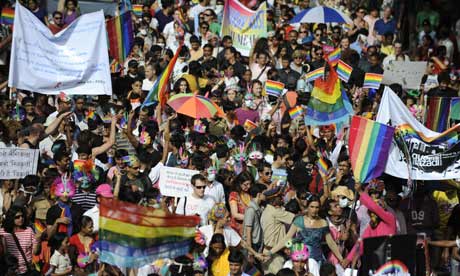
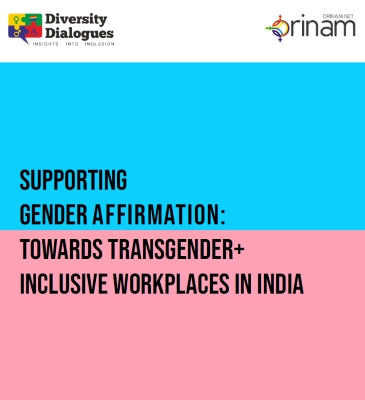


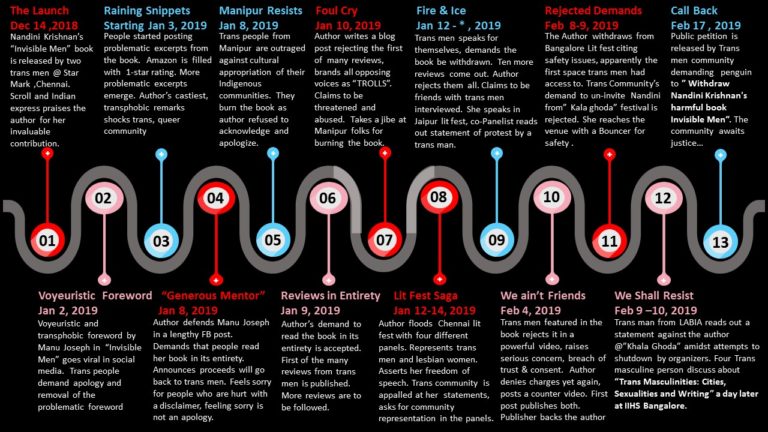
Well written.